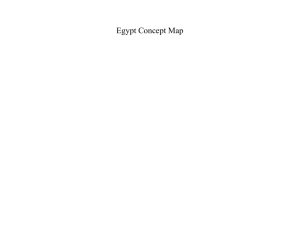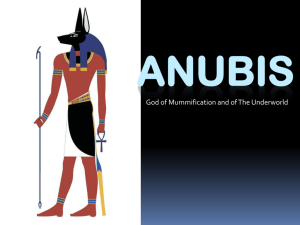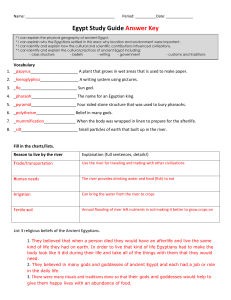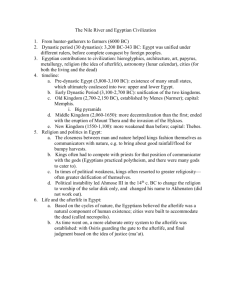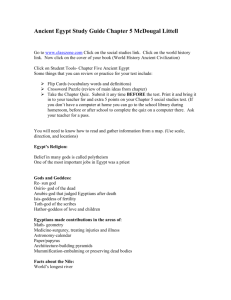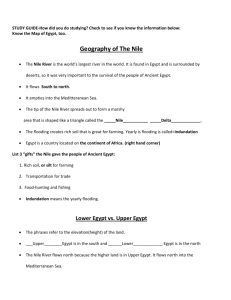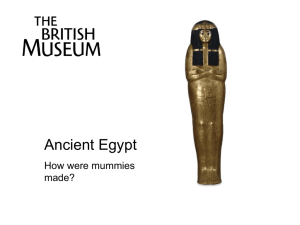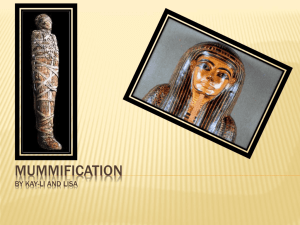Extended Response: Egyptian Religion and the Afterlife
advertisement
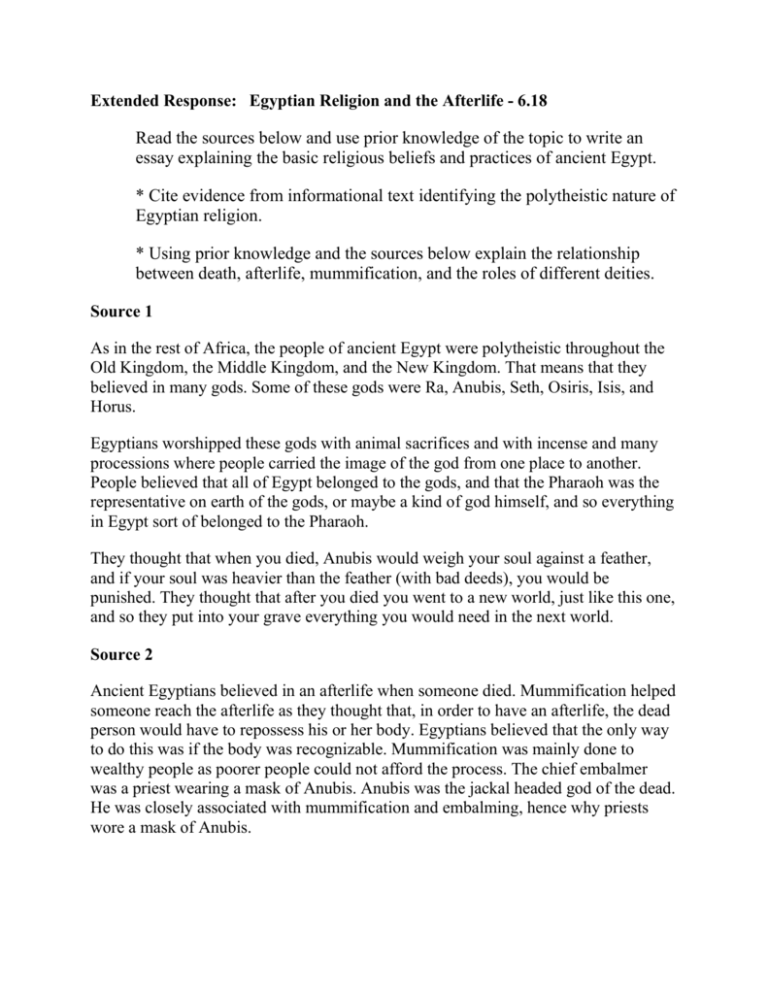
Extended Response: Egyptian Religion and the Afterlife - 6.18 Read the sources below and use prior knowledge of the topic to write an essay explaining the basic religious beliefs and practices of ancient Egypt. * Cite evidence from informational text identifying the polytheistic nature of Egyptian religion. * Using prior knowledge and the sources below explain the relationship between death, afterlife, mummification, and the roles of different deities. Source 1 As in the rest of Africa, the people of ancient Egypt were polytheistic throughout the Old Kingdom, the Middle Kingdom, and the New Kingdom. That means that they believed in many gods. Some of these gods were Ra, Anubis, Seth, Osiris, Isis, and Horus. Egyptians worshipped these gods with animal sacrifices and with incense and many processions where people carried the image of the god from one place to another. People believed that all of Egypt belonged to the gods, and that the Pharaoh was the representative on earth of the gods, or maybe a kind of god himself, and so everything in Egypt sort of belonged to the Pharaoh. They thought that when you died, Anubis would weigh your soul against a feather, and if your soul was heavier than the feather (with bad deeds), you would be punished. They thought that after you died you went to a new world, just like this one, and so they put into your grave everything you would need in the next world. Source 2 Ancient Egyptians believed in an afterlife when someone died. Mummification helped someone reach the afterlife as they thought that, in order to have an afterlife, the dead person would have to repossess his or her body. Egyptians believed that the only way to do this was if the body was recognizable. Mummification was mainly done to wealthy people as poorer people could not afford the process. The chief embalmer was a priest wearing a mask of Anubis. Anubis was the jackal headed god of the dead. He was closely associated with mummification and embalming, hence why priests wore a mask of Anubis.
